Theory: Intermediate
Lesson Overview:
• Explore the techniques used in percussive modern acoustic music.
• Learn how to expand your tapping technique.
• Develop a two-handed approach to rhythm. Click here to download a printable PDF of this lesson's notation.
How does a guitarist emulate the ringing polyrhythms of the Zambian kalumbu or Kalahari N!Laud (likely ancestors to the Brazilian berimbau) or the cascading atonal lines and crashing clusters of pianist Cecil Taylor?
As a 17-year-old science geek on a summer fellowship in 1968 as a scientist’s assistant, I found fulfillment with a late-night DJ gig on WRCT, the campus station. My ear gathered in much more than guitar music (though my just-acquired Hagström III was my main passion). I was trying to translate my limited chops into the creation of sounds not normally produced by a guitaristic approach, but still drawing on the instrument's unique character as a resonant body.
My experiments included using slides, springs, and other objects, but because I had studied piano as a child (under duress) I imagined that I could apply two-handed piano technique to the guitar. Unaware of Italian innovator Vittorio Camardese's virtuosic two-handed renditions of standards or even Tal Farlow's use of a well-placed right-hand thumb or index finger, I began tapping somewhat at random.
As I built strength and left-hand facility, the tapping gained clarity and purpose. Strings yielded a rich twang and dancing overtones. By concentrating on tapping on specific areas of an open low E, I found that I could emphasize the melodic potential of the harmonic series which in its upper reaches produced non-tempered intervals, outside of the normal Western concept of intonation. Adding a wah in the signal path, the moving filter could further zero in on these melodies as well as adding a rhythmic modulation that brought me closer to my initial inspirations.
As I added more right-hand fingers to the technique, it grew more pianistic with tapping spread across the fingerboard. Wide leaps, fleet lines, and clusters became simple as I found myself playing in unpredictable realms. By 1977, these techniques had become fully integrated into my approach to guitar. In 1985, after learning of Benoit Mandelbrot’s Fractal Geometry of Nature, I began to liken the various actions of an improvisatory journey to flow states, strange attractors, and the chaotic. Besides using these techniques in my solo work and in ensemble improvisations, I began to devise methods of notating them. My first attempt, realized in the composition “Holologo,” was published in Guitar Player magazine in 1986.
In 2003, for his Extreme Guitar Project, classical guitarist Marco Cappelli had a custom guitar built to his specifications that included two sets of resonant strings in addition to a regular neck. He asked a number of composers to create pieces, and the resultant album was released on Mode.
My score for Marco, “Amygdala,” uses an open D minor tuning (D–A–D–F–A–D) and a variety of approaches to tapping as well as other extended techniques. Marco wished to be able to perform the piece on a regular guitar, so I wrote a modified score with an extra staff for right-hand activities.
You can download the score here.
In 2008, Marco recorded this live performance of “Amygdala.”
In measure 4 (Ex. 1), the fretting hand maintains the two-note ostinato while the picking hand (using the index finger) first taps a gliss up, followed in measures 5 and 6 by a series of slow Fs leading to the quarter-note taps on the 4th and 6th strings, which move freely up and down the string. Depending on the strength of your attack, you will hear different upper partials, ringing harmonics, of the open strings.
In Ex. 2, we begin to zoom in to the array of harmonics in measure 8, with both index fingers used to tap a pitch then slide it into a held note. In measure 9, the fretting hand brushes the open strings followed by the picking-hand index finger brushing across the strings with the other hand held softly across the strings at the 6th fret to yield the indicated harmonics.
In measure 10, both middle fingers alternate, beginning over the indicated frets: 12, 9, and 7 for the fretting hand; 19, 19, and 12 for the picking hand. Varying the intensity of the tapping to generate different harmonics, the fingers move slowly from the bridge towards the nut.
We are in a flow state at measure 14 in Ex. 3. Both hands are concentrating just on octave Ds and the production of harmonics. Once in measure 15, the picking hand continues tapping harmonics of the open 4th string while the other hand taps and slides the written melody, which functions as source material for variations. Feel free to let the notes find your fingers! Let the gesture carry you.
In measure 17 (Ex. 4), both hands forcefully tap and gliss—the target notes are open to choice or whim. This could be likened to a chaotic state. It should always be rhythmic and grooving and should accelerate over the course of the section to a new tempo of 140 bpm at measure 18.
Returning to chaos theory, in Ex. 5 we enter the realm of the strange attractor at measure 18 where two fingers on each hand tap forcefully on the indicated open strings near the bridge (sul ponticello) to produce a twangy percussive sound. The finger position can be slightly moved up and down the strings to generate shifting arrays of harmonics.
Back to a flow state with Ex. 6. Each of the modules may be repeated as long as desired and the player may move between modules freely. The groove should be maintained, but tempo may go up or down in a range between 120-140 bpm. Open strings may be allowed to ring. Varying the dynamics will vary the harmonics, but should stay in the realm of loud. The effect will be one of shifting sense of where the “one” is and of the passage’s harmonic spectrum. The player can feel free to move from stopped strings to open, while always maintaining the patterns and groove.
In Ex. 7, the penultimate measure 30, the noteheads indicate the variability of pitch. Any notes may be used. With practice, the player can generate patterns based on visual sequences on the fingerboard ... or just plain-old randomness. Don't be afraid to go wild, as you may be surprised at the results. We might consider this section to be a perfect balance of chaos and flow.




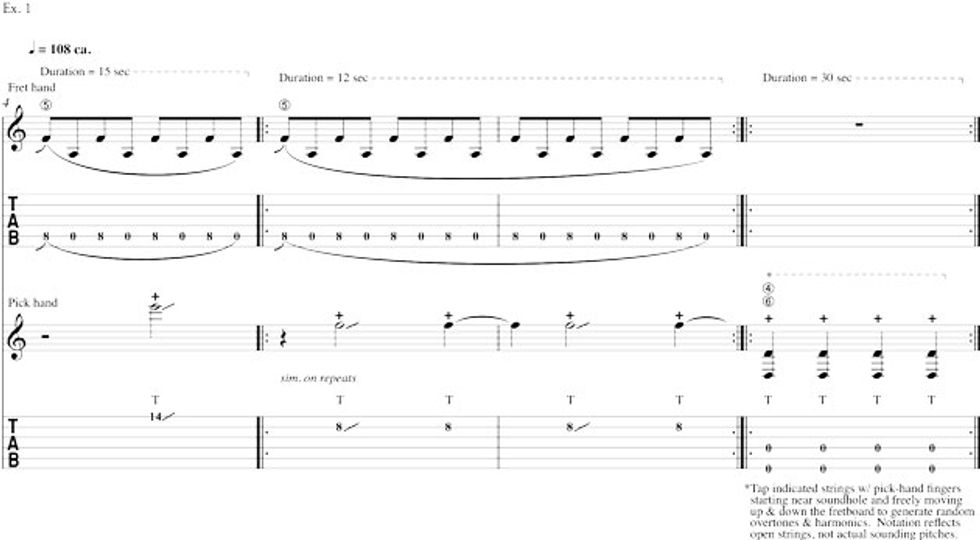
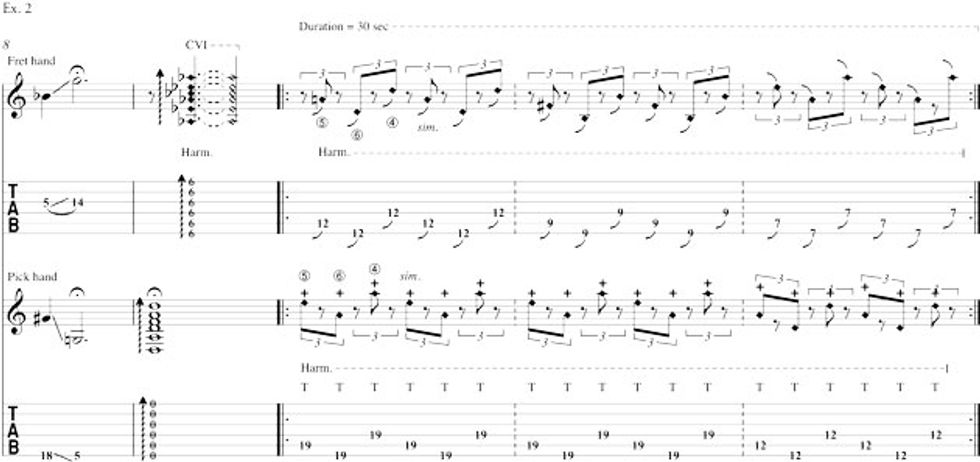
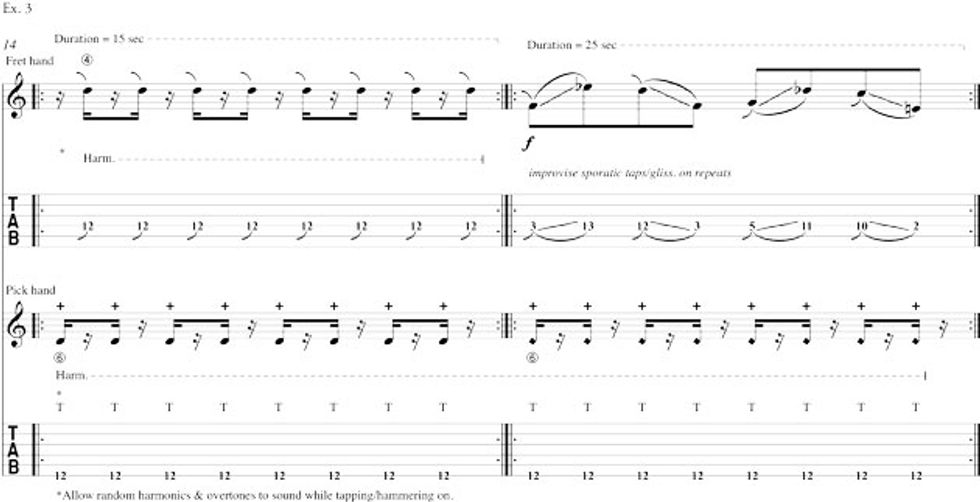
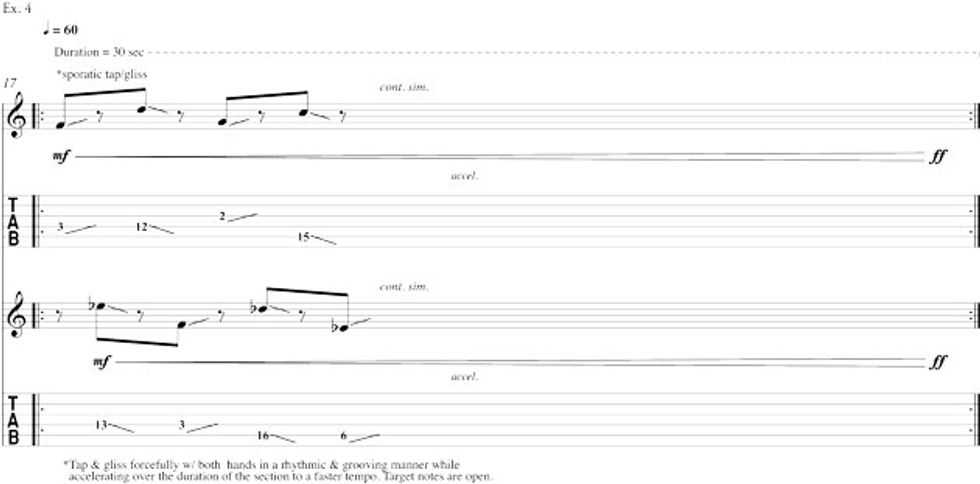
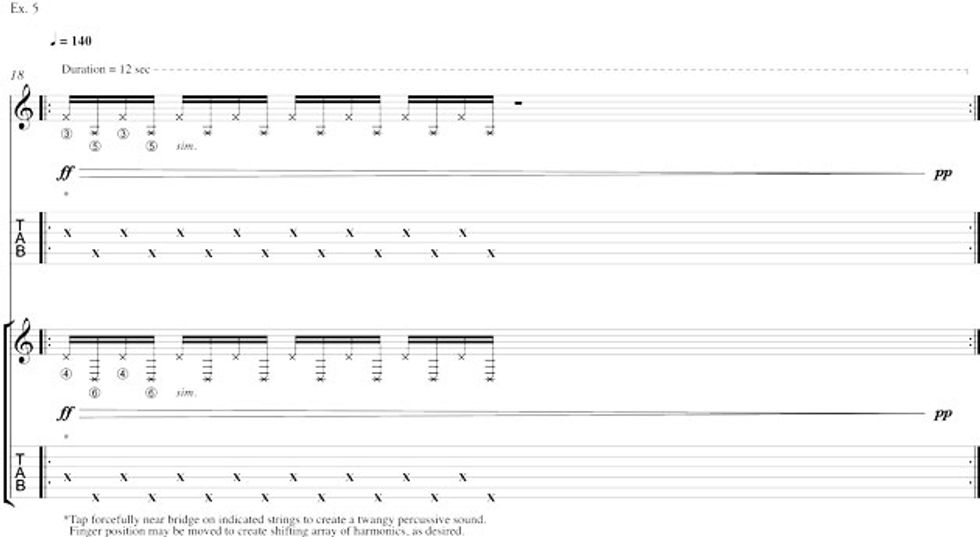
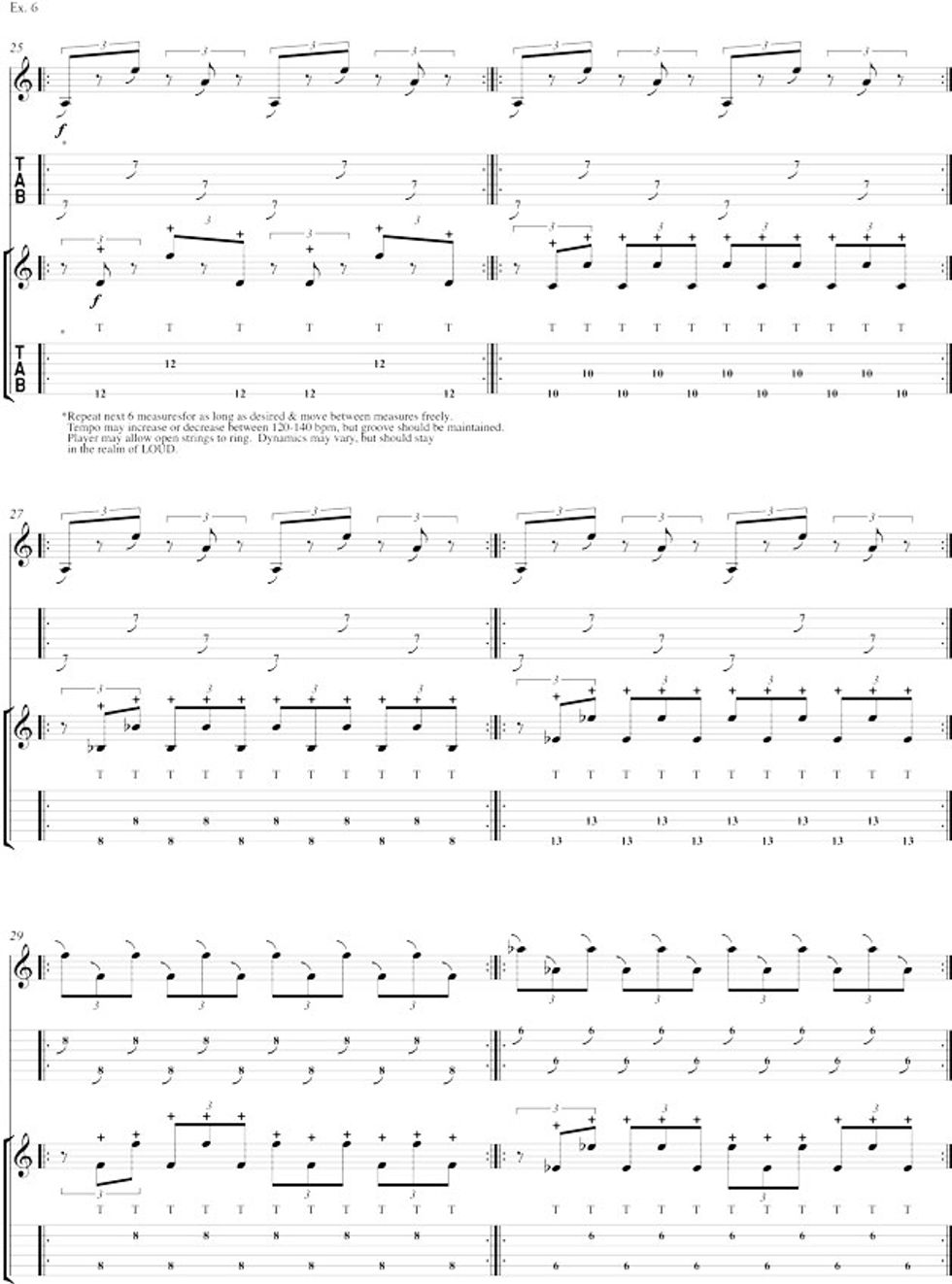
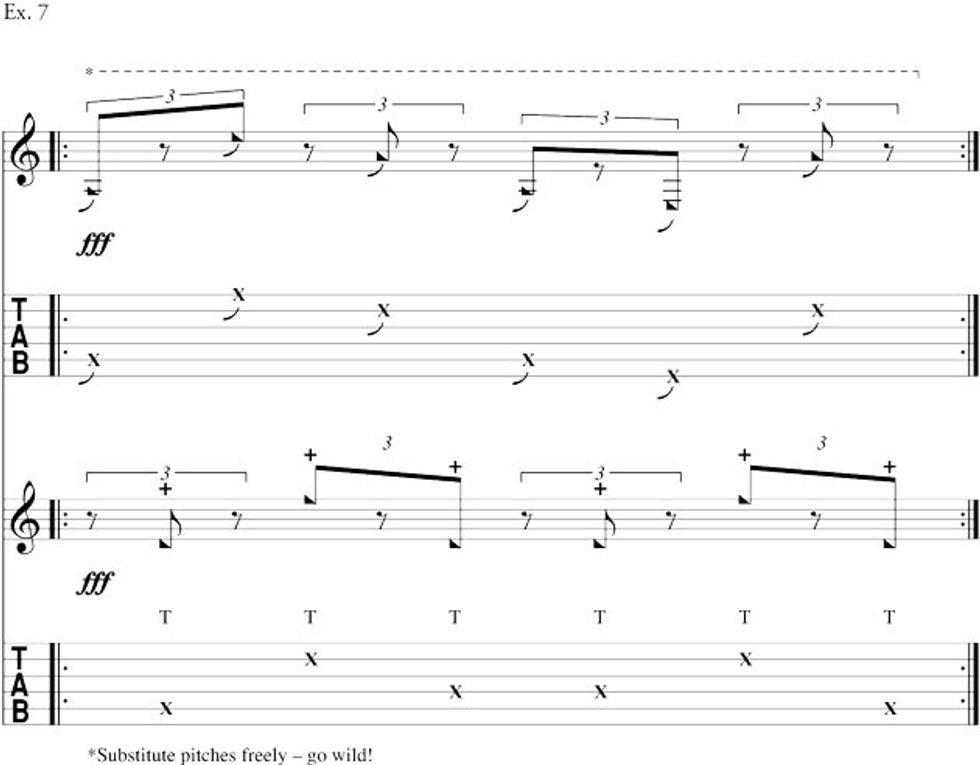









![Rig Rundown: John 5 [2026]](https://www.premierguitar.com/media-library/youtube.jpg?id=62681883&width=1245&height=700&quality=70&coordinates=0%2C45%2C0%2C45)






